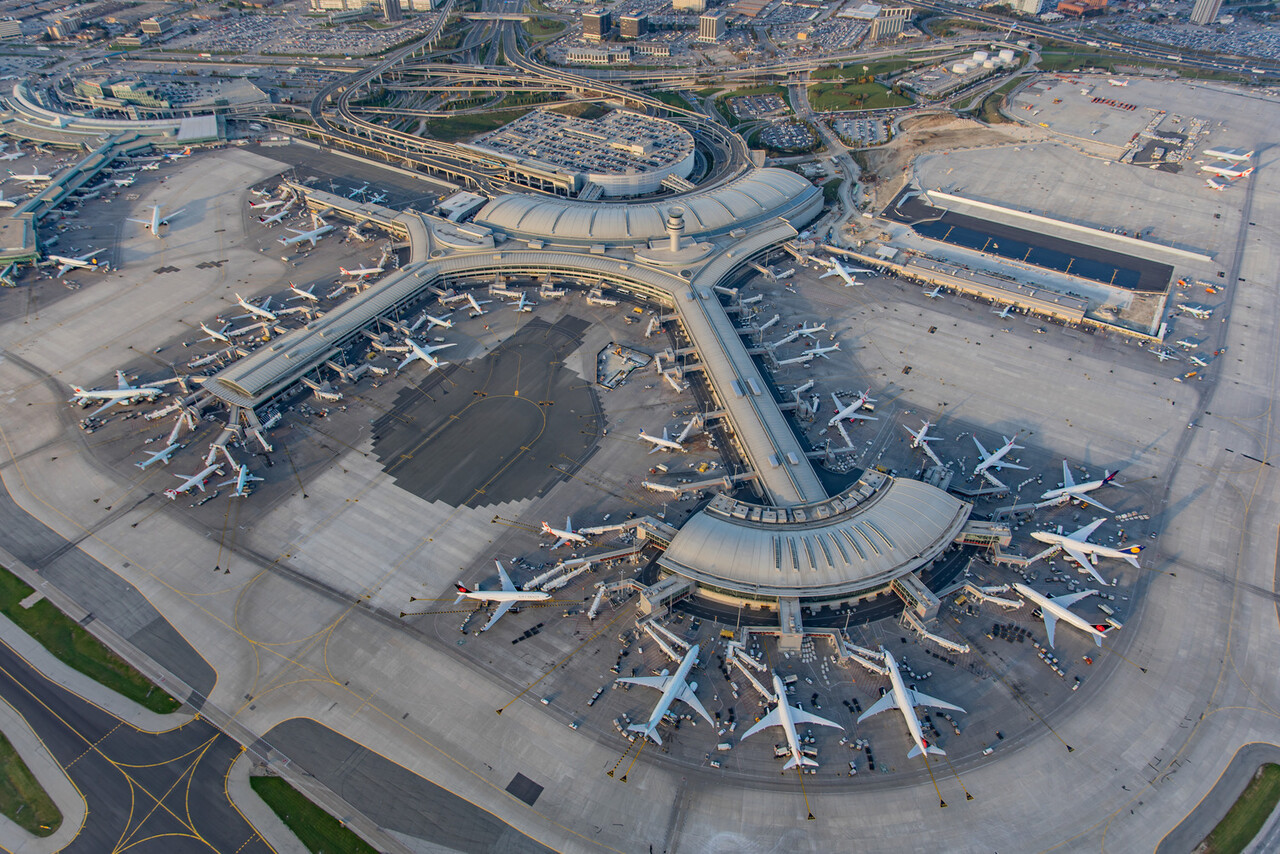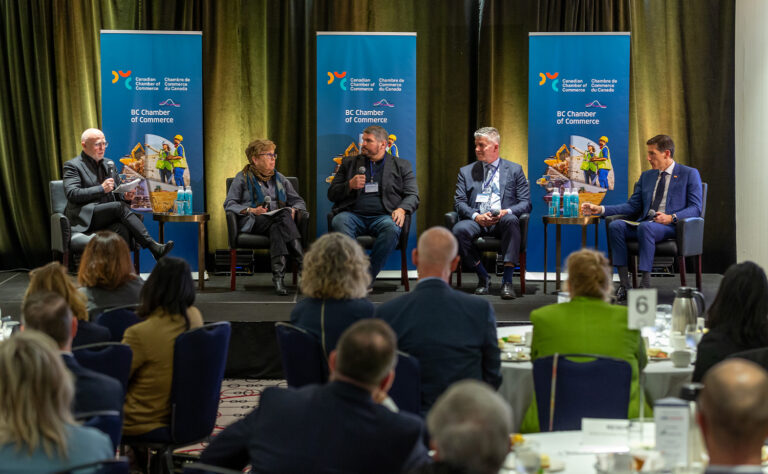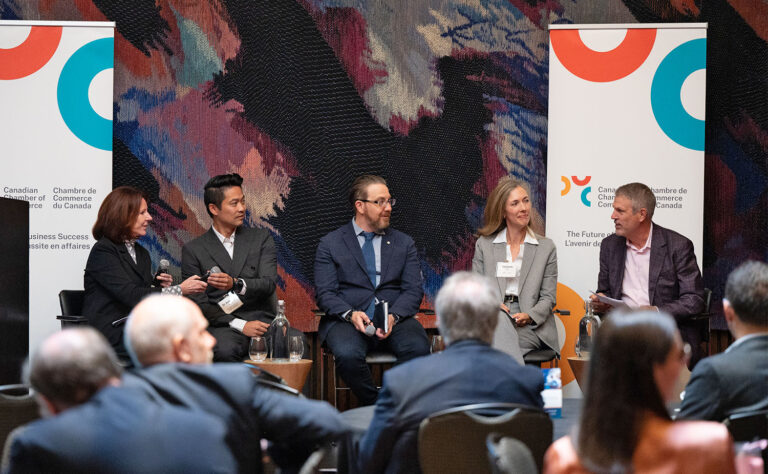Blog /
Improving Cross-border Travel at Toronto Pearson
Improving Cross-border Travel at Toronto Pearson
Contributed by the Greater Toronto Airports Authority (GTAA). Canada’s airports are a front door to this country. They welcome us...

Contributed by the Greater Toronto Airports Authority (GTAA).
Canada’s airports are a front door to this country. They welcome us home and offer a first impression for tourists, business travellers and immigrants. As travel across the world returns to pre-pandemic levels, the rebound of travel between Canada and the United States is important to promoting investment and trade. The U.S.-Canada trade relationship is one of the world’s largest, with over $1 trillion in trade in goods and services in 2021, and connectivity to the U.S. via flights from Canada is crucial to economic growth and job creation in both nations. As the fourth largest port of entry to the U.S., nearly 500,000 passengers travel through Toronto Pearson to the United States every month.
The pandemic revealed the consequences of underinvestment in our airports and presented us with a new set of priorities; instead of spending on innovation and infrastructure, we found ourselves taking on debt just to keep the lights on. If Canada’s airports are to be digital, efficient, climate friendly and ready for the future, critical advancements are needed now. Toronto Pearson is working together with industry and government partners to modernize cross-border travel and create a better experience for our passengers. Some of these solutions are outlined below.
Rebuilding Our Workforce
Like many sectors, the aviation industry workforce is struggling. Access to qualified and skilled workers is crucial to meeting the growing desire for travel as well as building a pipeline of talent to support future travel demand. Restoring the reputation of the aviation sector as a great place to build a career, building better pathways to jobs, and streamlining security clearance processes can help build a ready pool of workers. This approach would especially benefit newly arrived permanent residents, women, and youth, who often face these barriers to access good aviation jobs.
Modernizing Our Shared Border
Pre-pandemic, significant work was done to modernize the entry process for travellers arriving to Canada, enabling a safe, secure and seamless experience for the movement of people and goods across the Canada-U.S. border. While much of this work was impacted by government-imposed health requirements, it’s time to get this work back up and running.
The GTAA made an important step this summer, installing eGates in Toronto Pearson’s Terminal 1, in collaboration with the Canada Border Services Agency. Travellers use eGates to confirm their identity and submit or confirm their customs and immigration declaration for a smoother and faster border experience. Plans are underway for additional eGates in Terminal 3.
To enable further modernization, the Customs Act must be updated. Changes should include reducing customs officer touchpoints for low-risk travellers, using advanced data to support travel, and allowing Canada to implement a true “Goods to Declare/Nothing to Declare” exit process. Finally, immediate steps should be taken to update the process for incoming international travellers with enhanced digital tools like eGates and biometric technologies.
Return United States Customs and Border Patrol Resources and Capacity to Pre-pandemic Levels
United States Customs and Border Patrol (USCBP) enables U.S. bound travellers to clear customs in Toronto, allowing for a streamlined arrival process at their destination. During the pandemic, USCBP officer numbers, hours of operation and capacity were reduced at Toronto Pearson and have not yet returned to pre-pandemic levels. This is resulting is excessive wait times for travellers and putting at risk this important flow of travellers that support economies in Canada and many U.S. cities that rely on traffic from Pearson.
Solutions like Mobile Passport Control (MPC), which reduces inspection time and the time passengers spend in queues, are making a difference. However, despite modest improvements, like MPC, USCBP pre-clearance at Toronto Pearson remains a bottleneck. To address excessive wait times, USCBP must return to pre-pandemic staffing levels, hours of operation and overtime funding.
Process improvements also are being looked at. During the pandemic a new process, called Simplified Arrival (SA) was introduced. Designed to streamline the process and implemented across all USCBP operations in the US and Canada, in the preclearance environment it seems to be having the opposite effect and Toronto Pearson and other Canadian airports are seeking a review. Finally, we are pursuing a pilot program to improve the clearance of passenger bags bound for the U.S. In collaboration with USCBP and the Department of Homeland Security, similar pilots have been implemented in other countries with pre-clearance locations.
Re-start Enrollment in the NEXUS Program and Address Backlog of Applicants
The NEXUS program, which expedites border crossings for low-risk travellers, provides significant benefits to cross-border travel and creates a better traveller experience. More than 340,000 Canadians are waiting for their NEXUS program applications to be processed.
Enrollment centres, shuttered during the pandemic, have re-opened in the U.S, but those in Canada remain closed. To support Canada-U.S. travel and trade, it’s imperative that the NEXUS application process be restarted in Canada immediately to address this backlog and build the pool of trusted travellers.
There are many opportunities to modernize cross-border travel and create a better experience for our passengers travelling through Toronto Pearson. Implementing the above recommendations is only possible through the continued strong collaboration of the GTAA and its industry and government partners.
Related News

Protected: What We Heard: Key Takeaways from the Natural Resources Tour “Charting the Path”

What We Heard: Delivering Connected Care for Canadians




